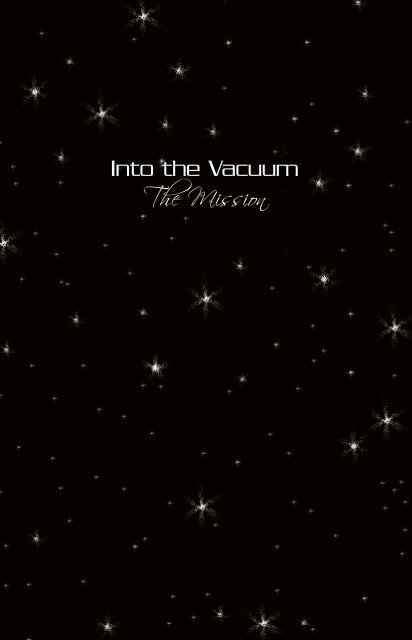edgar-mitchell
edgar-mitchell
edgar-mitchell
You also want an ePaper? Increase the reach of your titles
YUMPU automatically turns print PDFs into web optimized ePapers that Google loves.
30<br />
The Way of the Explorer<br />
family lived on base with no real civilization for hundreds of miles in any<br />
direction. There was only the base, surrounded by thousands of square<br />
miles of desert. On late afternoons, husbands and wives would oftentimes<br />
congregate on someone’s patio around a barbecue pit, talking shop, about<br />
the sameness of the weather, and what they might do with a weekend up<br />
to Reno. The men and women I was surrounded by were passionate about<br />
their work, and because of this, they were simply exciting to be around. In<br />
this respect I fit in, as this was serious research and development; we were<br />
in the process of making aircraft do things they weren’t designed to do.<br />
But occasionally a pillar of black smoke, rising from the desert floor, would<br />
signal that someone might not be coming home that night.<br />
The larger mission of military life never appealed to me. I could manage<br />
interest in the details of the weapons technology so that I could carry<br />
out my duty. But the horrendous destructive power of the weaponry was<br />
distressing, and I wanted to shift my sights from the technology of war to<br />
that of exploration. I felt that exploration was somehow at the core of my<br />
being. I knew that after this duty I might be able to lead my career in<br />
another direction by applying for the astronaut corps, though I hadn’t yet<br />
accumulated enough hours in the seat of a jet. When the Soviets had<br />
launched Sputnik in 1957, I realized that humans would not be far behind.<br />
I wanted to go there.<br />
But before leaving China Lake, another child was born to us, a baby<br />
girl we named Elizabeth. The family was growing, and we were again on<br />
the move, this time to the U.S. Naval Post-Graduate School in Monterey,<br />
California. Here I would study aeronautical engineering for the first time<br />
in my life, incorporating what I experienced in the cockpit into the hoard<br />
of new technical concepts being tested in wind tunnels. I also elected to<br />
study subjects outside the usual domain of a test pilot’s curriculum, such as<br />
the Russian language—a sign of the times. This was the confluence of science<br />
and real life.<br />
Through these years it became clear to me that new technology would<br />
play the preeminent role in the exploration of space, and that being a pilot<br />
alone, even a test pilot, would not take me there. I had to become a rocket<br />
scientist, like Robert Goddard. When school in Monterey drew to a close,<br />
I looked to the East Coast for an additional curriculum in aeronautics and<br />
astronautics, and found one to my liking at the Massachusetts Institute of<br />
Technology. The program’s ultimate goal was in getting a man into outer<br />
space. This would lead to the series of missions that would eventually land<br />
a man on the moon and return him safely to Earth. By changing my status<br />
with the Navy to that of an aeronautical engineer, I found a career path<br />
that I hoped would work for myself, my family, and the Navy. So, in 1961,<br />
Louise and I gathered our young family, and we were once again embarking<br />
on the familiar routine of moving and making a home in a distant city,


